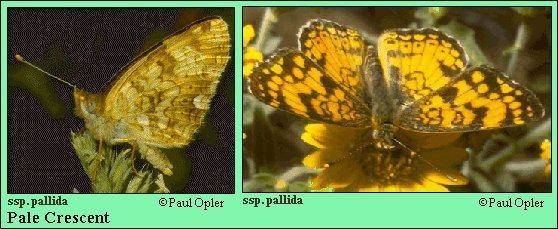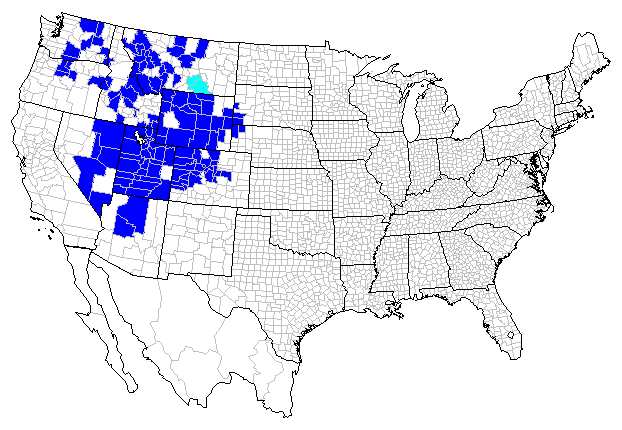 |
 

 |



Pale Crescent (Phyciodes pallida [W. H. Edwards])
Wing span: 1 3/8 - 1 5/8 inches (3.5 - 4.1 cm).
Identification: Upperside is pale orange; dark markings are reduced, especially on hindwing. Forewing both above and below with dark spot at center of inner margin. Underside is yellow with red-brown markings; crescent on hindwing is white.
Life history: Males perch in canyons to wait for females; only rarely do they patrol ridges. Females lay eggs in large groups on underside of host plant leaves; caterpillars eat leaves.
Flight: One flight from April-June.
Caterpillar hosts: Thistles (Cirsium) in the sunflower family.
Adult food: Flower nectar.
Habitat: Valleys, dry streambeds, dry fields.
Range: Central British Columbia southeast in the Rocky Mountains to Montana, Wyoming, and Colorado; south to Oregon, Utah, Nevada, and northern Arizona.
Conservation: Not usually required.
The Nature Conservancy Global Rank: G5 - Demonstrably secure globally, though it may be quite rare in parts of its range, especially at the periphery.
Management needs: None reported.
References:
Scott, J. A. 1986. The butterflies of North America. Stanford University Press,
Stanford, Calif. 583 pages, 64 color plates.
Tilden, J. W. 1986. A field guide to western butterflies. Houghton-Mifflin Co.,
Boston, Mass. 370 pages, 23 color plates.
Author: Jane M. Struttmann

